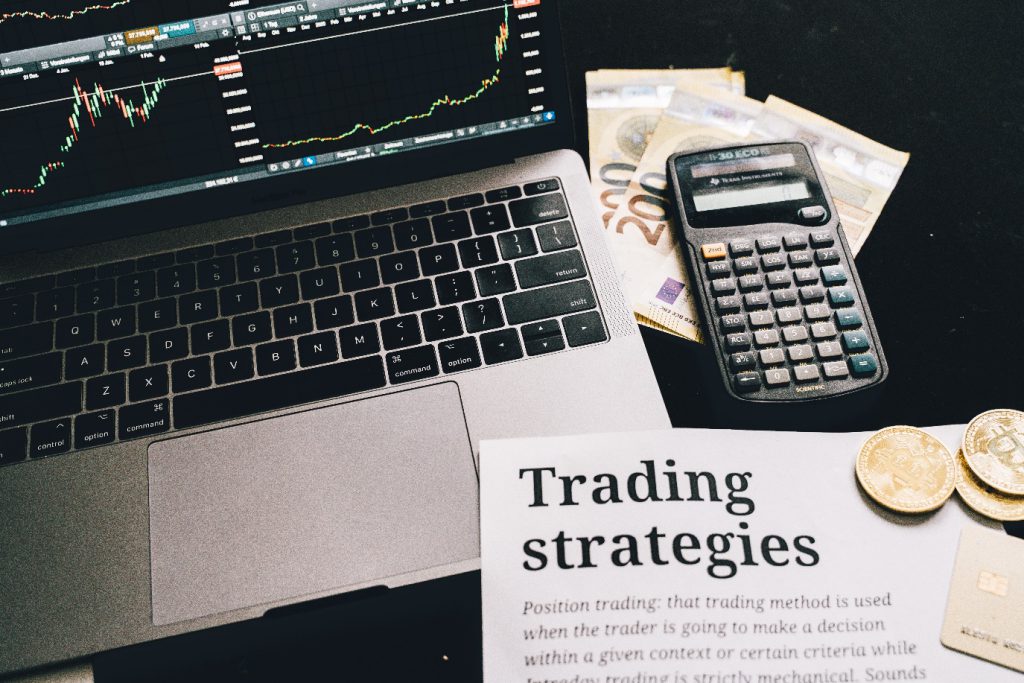1. Introduction: The Evolution of Forex Trading for Experienced Traders
As forex traders gain experience and expertise in navigating the dynamic and ever-changing currency markets, they inevitably reach a point where they seek to further enhance their trading strategies. This article serves as a comprehensive guide for experienced traders looking to take their forex trading skills to the next level. By delving into advanced techniques and strategies, traders can aim to maximize their profits while effectively managing risks. From understanding market analysis to exploring advanced technical indicators and tools, this article offers valuable insights and tips to help experienced traders adapt to the complexities of the forex market and achieve consistent success.
1. Introduction: The Evolution of Forex Trading for Experienced Traders
1.1 The journey from novice to experienced trader
So, you’ve shed the title of a novice trader and have successfully navigated the treacherous waters of the forex market. Congratulations! But, as any experienced trader will tell you, the learning never stops. The journey from a novice to an experienced trader is a constant evolution of skills, strategies, and mindset.
As an experienced trader, you’ve gained a solid foundation in the fundamentals of forex trading. You understand the importance of risk management, position sizing, and maintaining a trading plan. Now, it’s time to take things up a notch and embrace advanced strategies that can help you stay ahead in the market.
1.2 Changes in market dynamics and the need for advanced strategies
The forex market is an ever-evolving landscape, influenced by a multitude of factors such as economic data releases, geopolitical events, and technological advancements. As an experienced trader, you’ve witnessed firsthand the shifts in market dynamics. The strategies that worked for you in the past may no longer be as effective.
To stay ahead in this dynamic market, you need to adapt and develop advanced strategies. These strategies will help you navigate volatile market conditions, identify lucrative trading opportunities, and manage your risk effectively. It’s time to level up your trading game and embrace advanced forex strategies.
2. Understanding Market Analysis: A Key Component of Advanced Forex Strategies
2.1 Technical analysis: Exploring advanced chart patterns and indicators
Technical analysis is a vital tool for experienced traders, and it goes beyond the basic support and resistance levels. As you delve deeper into the world of advanced forex strategies, you’ll explore advanced chart patterns such as triangles, head and shoulders, and flags. You’ll also discover a plethora of indicators that can provide valuable insights into market trends, momentum, and volatility.
2.2 Fundamental analysis: Incorporating macroeconomic factors into trading decisions
While technical analysis focuses on price patterns and indicators, fundamental analysis takes into account the underlying economic factors that drive currency movements. As an experienced trader, you’ll learn to incorporate macroeconomic data, such as GDP growth rates, inflation figures, and employment reports, into your trading decisions. Understanding the correlation between economic factors and currency values can give you an edge in the forex market.
3. Expanding Horizons: Exploring Advanced Technical Indicators and Tools
3.1 Moving beyond traditional indicators: Fibonacci retracement and extensions
As an experienced trader, you’ve likely come across popular technical indicators such as moving averages and oscillators. But, to truly elevate your trading game, it’s time to explore more advanced tools. Fibonacci retracement and extensions can help you identify key levels of support and resistance, as well as potential price targets. By incorporating these tools into your analysis, you can enhance your trade entries and exits.
3.2 Embracing oscillators: Relative Strength Index (RSI) and Stochastic Oscillator
Oscillators are valuable indicators that can help you gauge market conditions and identify overbought or oversold levels. The Relative Strength Index (RSI) and Stochastic Oscillator are two popular oscillators used by experienced traders. By understanding how to interpret these indicators, you can make more informed trading decisions and avoid entering trades at unsustainable levels.
3.3 Harnessing the power of candlestick patterns: Doji, engulfing, and harami
Candlestick patterns provide valuable insights into market sentiment and potential reversals. As an experienced trader, you can take advantage of advanced candlestick patterns such as Doji, engulfing, and harami. These patterns can signal trend reversals, breakouts, or continuation patterns, allowing you to enter trades with more confidence.
4. Leveraging Fundamental Analysis: Incorporating Economic Factors into Forex Trading
4.1 Understanding economic indicators and their impact on currency markets
Economic indicators serve as crucial catalysts for currency movements. As an experienced trader, it’s essential to understand the impact of economic indicators such as interest rates, employment figures, and inflation reports on currency markets. By monitoring and analyzing these indicators, you can anticipate market reactions and make informed trading decisions.
4.2 Analyzing central bank policies and interest rate differentials
Central banks play a significant role in shaping currency values through their monetary policies and interest rate decisions. As an experienced trader, keeping an eye on central bank announcements and understanding the implications of interest rate differentials can give you a trading edge. By aligning your trades with central bank policies, you can position yourself for potential profit opportunities.
4.3 Evaluating geopolitical events and their influence on forex trading
Geopolitical events, such as elections, trade wars, and geopolitical tensions, can have a profound impact on currency markets. As an experienced trader, it’s crucial to evaluate these events and their potential consequences on currency values. By staying informed and adapting your trading strategies to geopolitical developments, you can navigate volatile market conditions and seize opportunities that arise from such events.
Remember, as an experienced trader, you have the knowledge and skills to explore advanced forex strategies. Stay curious, stay adaptable, and don’t forget to have some fun while you’re at it. Happy trading!
5. Advanced Risk Management Techniques: Preserving Capital in Volatile Markets
5.1 Position sizing and calculating risk-reward ratios
When it comes to advanced forex trading, one crucial aspect is managing your risk effectively. Position sizing plays a significant role in this regard. It involves determining the appropriate amount of capital to allocate for each trade based on your risk tolerance and account size. By calculating risk-reward ratios, you can make informed decisions about potential trades. Remember, risk management is all about preserving your capital, so don’t bet the farm on a single trade.
5.2 Utilizing trailing stops and stop-loss orders for advanced risk management
To protect your gains and limit potential losses, advanced traders often use trailing stops and stop-loss orders. These tools automatically adjust your exit points as the market moves in your favor, allowing you to lock in profits without constantly monitoring the trade. By setting stop-loss orders, you establish predetermined levels at which your positions will be closed if the market moves against you. This way, you can manage risk more effectively and reduce the emotional stress often associated with forex trading.
5.3 Diversification and hedging strategies to mitigate risk
In advanced forex trading, diversification and hedging strategies can be valuable tools for mitigating risk. By spreading your investments across different currency pairs or other asset classes, you reduce the impact of potential losses from a single trade. Additionally, hedging allows you to protect your positions by opening opposite trades or using derivatives such as options or futures contracts. While these strategies can be complex, they offer experienced traders an additional layer of risk management.
6. Mastering Advanced Trading Strategies: Scalping, Swing Trading, and Position Trading
6.1 Scalping: Rapid-fire trading for short-term gains
Scalping is a popular strategy among advanced forex traders who thrive on short-term market movements. It involves placing numerous trades within a day or even minutes to capture small price fluctuations. If you have a knack for speed and quick decision-making, scalping can be an exciting approach. However, keep in mind that it requires exceptional discipline, as frequent trading can lead to increased transaction costs and psychological pressure.
6.2 Swing trading: Capturing intermediate-term trends
Swing trading takes a slightly longer-term approach, focusing on capturing intermediate market trends that can span from a few days to weeks. This strategy requires patience and the ability to identify potential turning points in the market. By aiming to catch the “swings” in price, swing traders aim to profit from both upward and downward moves.
6.3 Position trading: Profiting from long-term market movements
For those who prefer a more relaxed trading style, position trading allows you to profit from long-term market movements that can span months or even years. This strategy involves analyzing fundamental factors and macroeconomic trends to identify potential currency pairs with strong long-term prospects. Position trading requires patience and the ability to withstand short-term fluctuations while keeping your focus on the bigger picture.
7. Fine-tuning Execution: Advanced Order Types and Trade Management
7.1 Limit, stop, and market orders: Choosing the right order type
As an advanced trader, it’s important to understand the different types of orders available and when to use them. Limit orders allow you to buy or sell at a specific price or better, ensuring you don’t miss out on a desired entry or exit point. Stop orders, on the other hand, are used to trigger buying or selling once a specific price level is reached, helping to limit losses or capture profits. Understanding when to use market orders, limit orders, or stop orders can significantly impact trade execution and overall performance.
In conclusion, advanced forex strategies are a vital component for experienced traders seeking to elevate their trading game. By incorporating advanced market analysis techniques, leveraging technical indicators and tools, and mastering risk management, traders can gain a competitive edge in the forex market. Furthermore, by delving into advanced trading strategies and fine-tuning execution, traders can optimize their performance and increase their chances of achieving consistent profitability. With the right mindset, discipline, and continuous learning, experienced traders can navigate the complexities of the forex market with confidence and success.
FAQ
1. Are these advanced forex strategies suitable for all experienced traders?
While the strategies discussed in this article are designed for experienced traders, it’s important to note that not all strategies may be suitable for every trader. Each trader has a unique trading style, risk tolerance, and financial goals. It is essential for traders to carefully evaluate and test different strategies to determine which ones align with their individual preferences and objectives.
2. Do I need to have a deep understanding of technical analysis to implement advanced strategies?
While a solid understanding of technical analysis can be helpful when implementing advanced strategies, it is not an absolute requirement. However, it is recommended to have a basic knowledge of technical indicators, chart patterns, and candlestick analysis to effectively use and interpret advanced tools and strategies. Traders can also consider collaborating with experienced analysts or utilizing advanced trading platforms that provide comprehensive technical analysis tools.
3. How important is risk management in advanced forex trading?
Risk management is crucial in any form of trading, and it becomes even more critical when implementing advanced forex strategies. Advanced traders should focus on preserving capital and managing risk to protect themselves from significant losses. Implementing techniques such as position sizing, setting stop-loss orders, and diversification can help traders mitigate risks and protect their trading capital in volatile market conditions.
4. Can I expect immediate success by implementing these advanced strategies?
Forex trading, even with advanced strategies, does not guarantee immediate success or consistent profitability. It requires continuous learning, practice, and the ability to adapt to changing market conditions. Traders should set realistic expectations and prioritize long-term success over short-term gains. It is essential to backtest strategies, maintain discipline, and continuously evaluate and refine trading approaches to increase the chances of achieving consistent profitability over time.









Facebook Comments